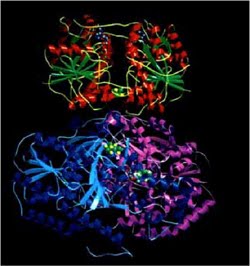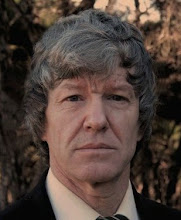The process of transcribing DNA instructions into proteins has now been found to be a lot smarter than previously imagined.
A detailed comparison of DNA and RNA in human cells has uncovered a surprising number of cases where the corresponding sequences are not, as has long been assumed, identical. The RNA-DNA differences generate proteins that do not precisely match the genes that encode them.
The finding, published May 19, 2011, in Science Express, suggests that unknown cellular processes are acting on RNA to generate a sequence that is not an exact replica of the DNA from which it is copied. Vivian Cheung, the Howard Hughes Medical Institute investigator who led the study, says the RNA-DNA differences (which the researchers casll RDDs), which were found in all 27 individuals whose genetic sequences were analysed, are a previously unrecognised source of genetic diversity that should be taken into account in future studies. They found at least one RDD site in 40% of genes.
Cheung says the particular RNA-DNA discrepancies that they found appear systematic. There are four bases, or letters, that make up the DNA code: A, T, G, and C. The RNA equivalents are A, U, G, and C. In individuals who had RNA-DNA differences at a specific site in the genome, the mismatched bases were always the same. In other words, if the team found a C in the RNA sequence where they expected an A, all individuals who had an RDD at this point also had a C in their RNA sequence--never a G or a U. 'Such uniformity makes us believe that there is a 'code' or 'guide' that mediates the RDDs and they are not random events,' says Cheung. 'And it is important to note that since these RDDs were found with just 27 individuals, they are common.'
Full article in ScienceDaily.
skip to main |
skip to sidebar



Thoughts on the fundamental logic--i.e., the molecular logic--of life, plus other life items (the first are copied from my EStar blog, from 2006 onwards). The foundation of life is the logic of the atom; built on that is the logic of the molecule; built on that is the logic of the cell; built on that is the logic of the organ; built on that is the logic of the organism.


Popular Posts
-
This article from the online entity of Science , published by the American Association for the Advancement of Science, is yet more proof of ...
-
THE REAL ORIGIN OF SPECIES — BIODEVELOPMENT — by NOBILANGELO CERAMALUS (pronounced noble- arn -jillo kerra- mar -liss) Member of the Americ...
-
Using very fine electrodes, researchers have revealed some of the astonishing processing-power of a single human neuron. Full story at ht...
-
Bio-molecules are network processors. A cell is a collection of molecular network processors. The individual processing is affected by the b...
-
This article gets close to saying what this blog has been saying for years . Bio-molecular logic and processing operates over the aeons to ...
-
As this blog has been saying for years, the so-called 'junk' DNA is not junk. To use computer terms, DNA is CPU, RAM, disk drive, o...
-
The process of transcribing DNA instructions into proteins has now been found to be a lot smarter than previously imagined. A detailed com...
Total Pageviews
NOTE ON TOTAL PAGEVIEWS
Blogger's statistics have not been operating since the start of this blog. Only since mid 2009.
About Me

- Nobilangelo
- My Christian name is pronounced 'noble-arn-jillo' (i.e., both o's are long, so the first two syllables rhyme with 'noble' not 'hobble'--yes, I know that's obvious, because there's only one 'b' between the 'o' and the 'i', but some people seem to see two b's, hence the English lesson). My surname is pronounced kerra-marliss. I was born, bred and educated in New Zealand, except for an international systems-engineer's course in San Antonio, Texas. I am born-again Christian, a thinker with a very practical turn of mind, a scientist with a particular interest in planet-friendly energy and neuroscience, an engineer (mechanical, industrial and IT systems), an inventor, a Member of the American Association for the Advancement of Science, a writer and poet, a naturist, a designer in different fields, an arranger and composer of symphonic music, a multi-award-winning IT journalist, a photographer, and a practitioner at various times in other hands-on fields including building, metalwork, woodwork, stained-glass and landscaping.